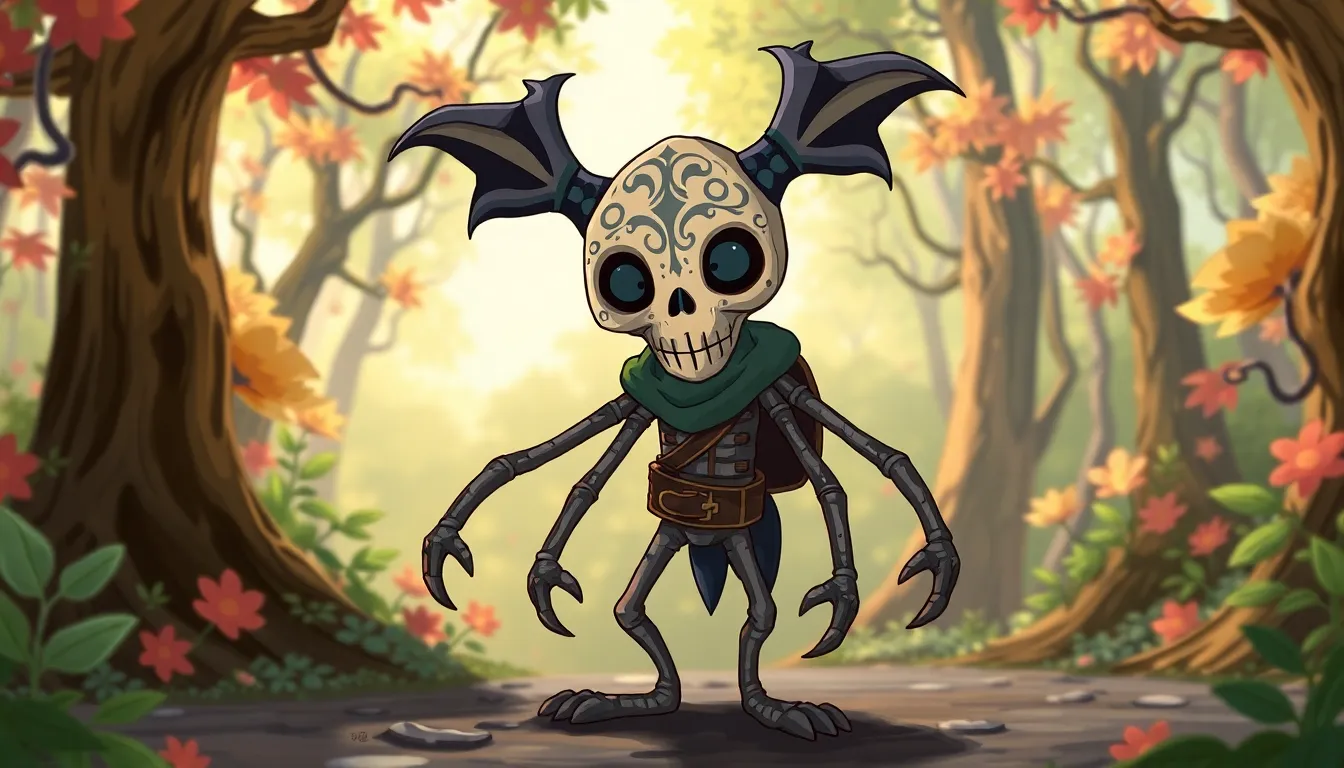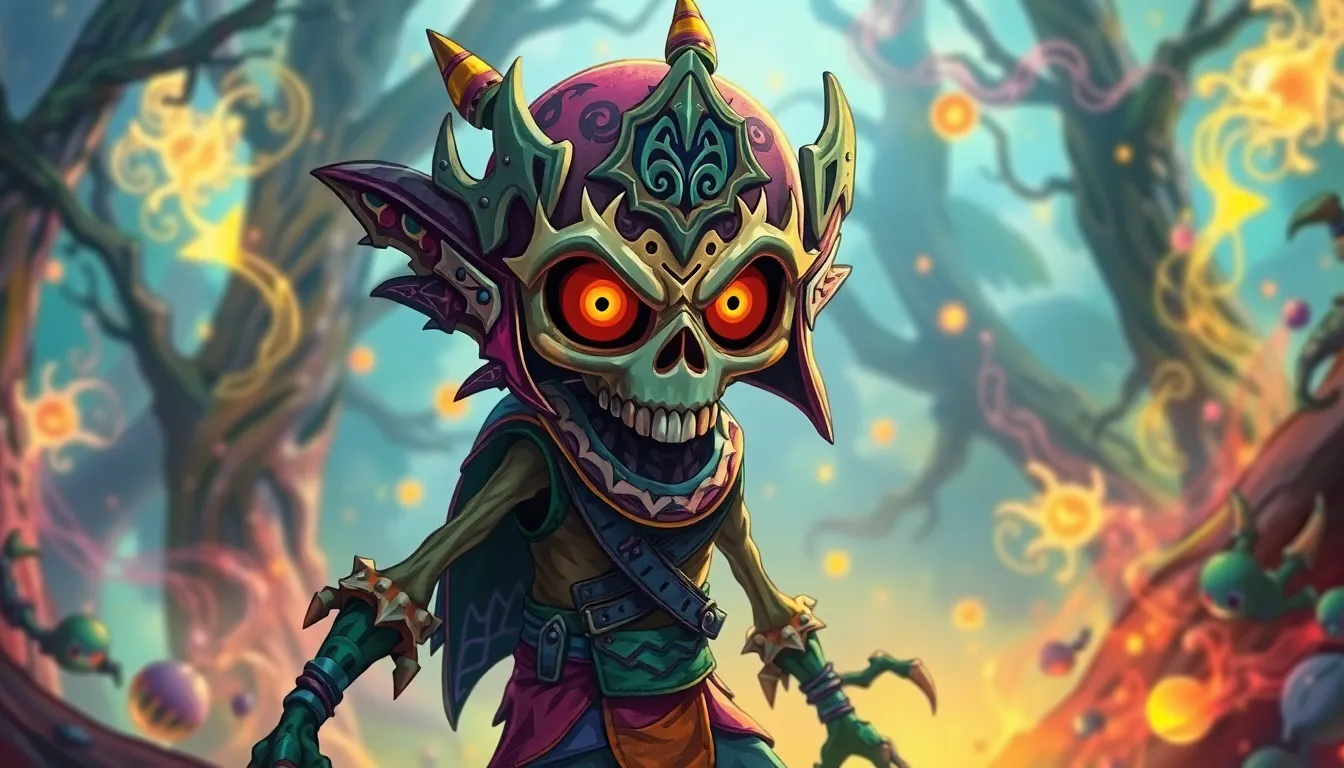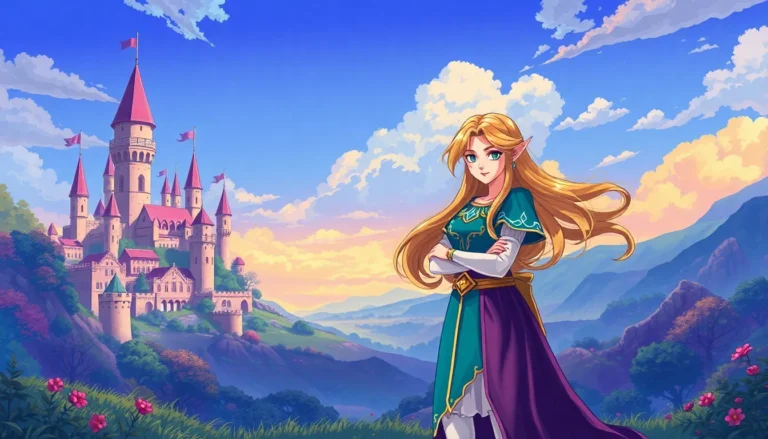In the whimsical world of Hyrule, few characters capture the imagination quite like Skull Kid. With his mischievous grin and iconic mask, he’s not just a trickster; he’s a force to be reckoned with. Players have journeyed through the enchanting landscapes of The Legend of Zelda: Majora’s Mask, where this enigmatic figure weaves chaos and charm into the fabric of the game.
Table of Contents
ToggleOverview of Skull Kid in Zelda
Skull Kid emerges as a central character in The Legend of Zelda: Majora’s Mask. Known for his playful yet malevolent demeanor, he influences the game’s atmosphere significantly. His peculiar mask serves as a potent symbol, enhancing his magical abilities and connection to the chaotic forces in the universe.
In the game, he possesses the iconic Majora’s Mask, which grants him immense power. This mask transforms him into a formidable antagonist, showcasing his range from a simple trickster to a serious threat. Players encounter him multiple times, each encounter revealing layers of his personality and motivations.
Mischief defines Skull Kid, as he often plays pranks on the inhabitants of Termina. Interactions with other characters highlight his complicated relationships, especially with the four guardians of the lands. These dynamics enrich the storyline and emphasize his impact on the world around him.
Skull Kid’s backstory adds depth to his character. Once an innocent child, he becomes estranged from his friends, leading to his loneliness and resentment. This emotional journey fuels his actions throughout the game, allowing players to sympathize with his plight, even as they confront him.
Significantly, Skull Kid represents themes of loss and the consequences of isolation. His transformation shows how external influences can corrupt one’s innocent nature. Engaging with him unfolds mysteries, enlightening players about the darker aspects of Majora’s Mask’s universe.
Origins of Skull Kid

Skull Kid emerges as a significant figure within the lore of The Legend of Zelda series. His character reflects a blend of playfulness and darkness.
Early Appearances in The Legend of Zelda Series
Initially, Skull Kid appears in The Legend of Zelda: Ocarina of Time. In this game, he showcases his mischievous nature through playful interactions in the Kokiri Forest. His charming yet slightly sinister demeanor leaves a lasting impression. Later, he returns in The Legend of Zelda: Majora’s Mask, gaining prominence as a central character. Players witness his transformation from a lighthearted trickster to a more complex figure burdened by loss and isolation. This evolution captivates audiences and deepens the narrative.
Development and Design
The design of Skull Kid draws inspiration from various cultural elements. His iconic mask, adorned with eerie features, symbolizes chaos and transformation. Artists aimed to create a character that stands out against the whimsical backdrop of Termina. Additionally, his elongated limbs and playful posture reflect his mischievous persona. Designers incorporated vibrant colors and distinctive patterns to emphasize his connection to the supernatural. Those choices resonate with the themes of loss and change woven throughout the game. Skull Kid’s design enhances his role and serves as a visual representation of his inner turmoil and complexity.
Skull Kid’s Role in The Legend of Zelda: Majora’s Mask
Skull Kid plays a pivotal role throughout The Legend of Zelda: Majora’s Mask. His character acts as a catalyst for many events within the game’s intricate narrative.
Key Events and Storyline Involvement
Skull Kid’s actions commence the events of Majora’s Mask, setting an ominous tone. He steals Majora’s Mask, allowing its malevolent power to influence him. This theft directly leads to chaos in the land of Termina, where time gradually unravels over three days. Encountering Link, Skull Kid expresses feelings of loneliness, revealing his backstory with friends. Players witness his transformation from playful trickster to the antagonist driven by anger and despair. Key encounters with the four guardians provide insight into his character and motivations, deepening the player’s understanding of the situation.
Impact on Gameplay Mechanics
Skull Kid significantly influences gameplay mechanics by introducing time-based elements. The three-day cycle revolves around his actions, impacting the game’s pacing and strategy. Players engage in unique mechanics such as time manipulation to counteract the chaos he creates. His presence also requires players to explore various interactions, encouraging them to form relationships with the inhabitants of Termina. Engaging with Skull Kid often leads to side quests that deliver rewards and deepen the overall experience. Through these dynamics, he enhances both the challenge and the emotional depth of the gameplay.
Fan Theories and Interpretations
Various theories and interpretations surrounding Skull Kid enrich his character within The Legend of Zelda universe. Players explore these perspectives to uncover his complex nature and motivations.
Analysis of Skull Kid’s Motivations
Skull Kid’s motivations stem from a mixture of loneliness and betrayal. After losing his friends, he develops a desire for connection, manifesting through mischievous antics. Feelings of anger and isolation drive him to seek power through Majora’s Mask. Players speculate that his playful demeanor serves as a mask for deeper emotional scars. Analysts note his transformation from a trickster to an antagonist highlights the conflict between innocence and corruption. This character arc resonates as it reflects real-life struggles with alienation and the longing for acceptance.
Cultural References and Symbolism
Skull Kid’s design features rich cultural references, intertwining elements from various mythologies. The iconic mask symbolizes chaos, embodying transformation and the darker aspects of identity. Masks in many cultures often represent hidden truths and alternate selves, adding depth to his character. Additionally, his connection to nature and the supernatural draws inspiration from folklore, emphasizing themes of loss and rebirth. Artists and designers cleverly integrate vibrant colors into his appearance, paralleling his chaotic spirit. Ultimately, his character encapsulates the complexity of facing inner demons and reconciling past traumas.
Skull Kid’s character in The Legend of Zelda: Majora’s Mask is a fascinating blend of mischief and depth. His journey from a playful trickster to a complex figure burdened by loss resonates with players on multiple levels. This transformation highlights the impact of isolation and the longing for connection, making him a relatable antagonist.
Through his interactions and the chaos he brings to Termina, Skull Kid not only enhances the gameplay experience but also enriches the narrative with themes of innocence and corruption. His iconic mask serves as a powerful symbol of transformation, embodying the darker aspects of his identity. As players navigate the intricacies of his character, they uncover the emotional layers that make Skull Kid a memorable and significant part of the Zelda universe.



